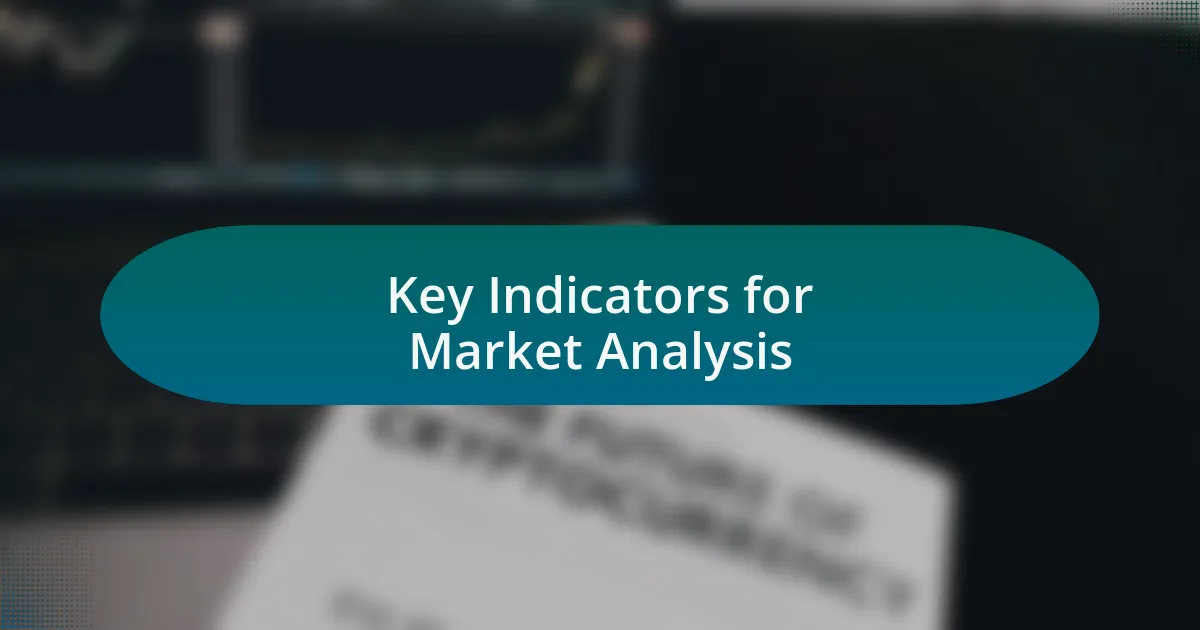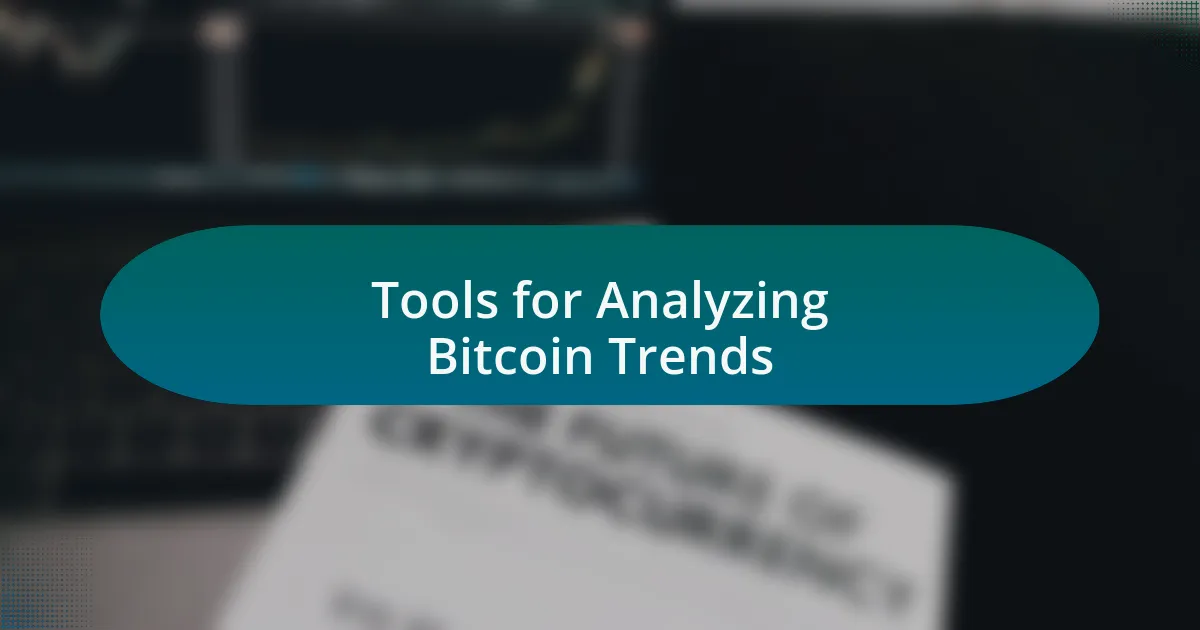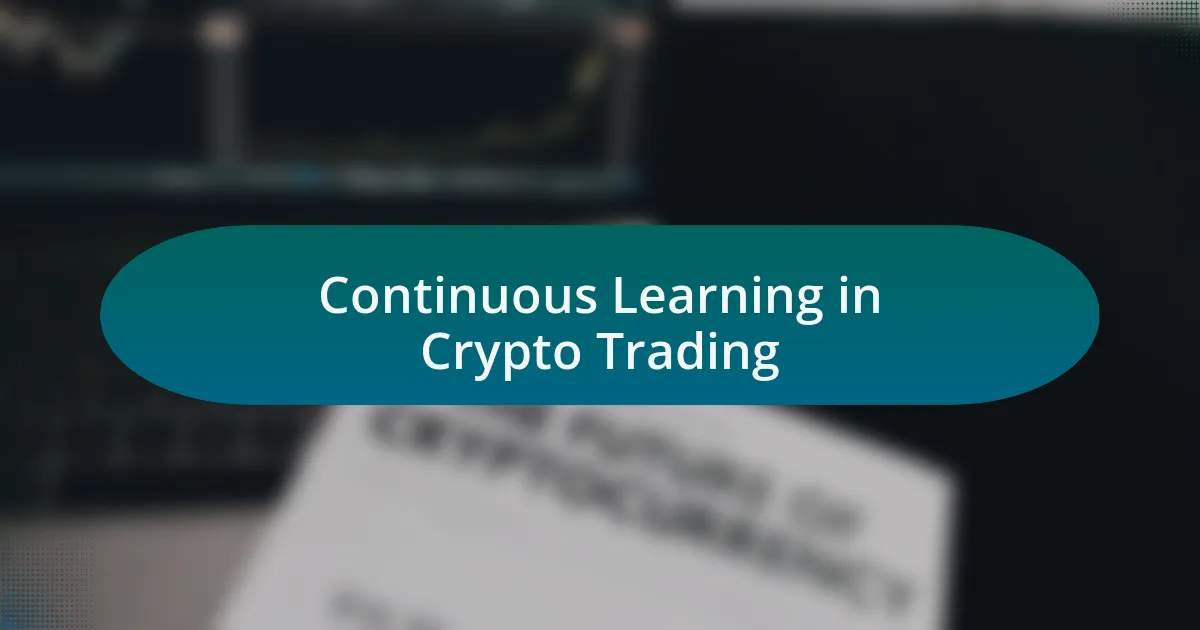Key takeaways:
- Understanding Bitcoin market trends involves analyzing historical price movements, trading volume, and global events, which significantly impact prices.
- Choosing reliable crypto trading platforms is vital for security, ease of use, and access to various trading pairs to diversify investments.
- Key technical indicators like Moving Average and Relative Strength Index (RSI) are essential tools for making informed trading decisions.
- Continuous learning and engaging with trading communities enhance analytical skills and adaptability in the dynamic crypto market.

Understanding Bitcoin Market Trends
When I’m analyzing Bitcoin market trends, I often reflect on its historical price movements. For instance, I remember how in late 2017, excitement surged as Bitcoin reached nearly $20,000. It felt exhilarating, but it also taught me to be cautious about hype and remember that markets can swing dramatically, often triggered by news or influential figures.
I’ve found that looking at trading volume is crucial. It’s fascinating how increased buying volume often signals a bullish trend, while a sudden drop can hint at bearish sentiment. Have you ever made a trade based solely on volume changes? I once bought during a volume spike, only to see the price pull back shortly after. It was a lesson on the importance of not just following trends but integrating volume analysis with my broader research.
Furthermore, I attend to the broader geopolitical events that influence Bitcoin’s price, which can be quite eye-opening. For example, when China imposed stricter regulations on cryptocurrency trading, I witnessed a swift drop in prices, sparking fear among traders. This made me realize that understanding the interplay between global events and market reactions is essential in predicting future trends. What’s your experience with global news affecting your trading decisions?

Importance of Crypto Trading Platforms
When I think about the importance of crypto trading platforms, I see them as the foundation of my trading experience. They provide essential tools and features that empower both new and seasoned traders. For example, I remember my early days when I struggled to find a platform that offered detailed market analysis. It was a game-changer when I discovered a platform that combined ease of use with robust analytical tools.
The security features available on these platforms cannot be overstated. A while back, I faced a scare when I heard about a major exchange being hacked. It underscored for me just how crucial it is to choose a platform that prioritizes user security. What about you? Have you ever evaluated a trading platform based on its security measures? I’ve learned to read reviews and ask around in forums to ensure I’m making informed choices.
Another significant aspect is the accessibility of different trading pairs. I’ve often found that having a wider array of options lets me diversify my investments, thereby balancing risk. There was a time when a particular altcoin surged, and I was able to jump in because my platform offered it. This aspect made me realize how critical it is to select a platform that keeps pace with the ever-changing crypto landscape.

Key Indicators for Market Analysis
Understanding key indicators for market analysis is crucial in navigating Bitcoin trends effectively. One that I’ve found particularly valuable is the Moving Average (MA), which smoothens out price data and helps identify the overall direction. I remember when I first started using the 50-day MA; it served as a reliable signal for entry and exit points, making my trading decisions feel more grounded.
Another important indicator is the Relative Strength Index (RSI). It measures the speed and change of price movements, telling me whether Bitcoin is overbought or oversold. I once made a profitable trade after noticing an RSI reading above 70, which indicated it was time to reconsider my position. Do you ever use the RSI to guide your trades? I know it can feel daunting at first, but incorporating it into my strategy transformed my approach.
Volatility is yet another aspect I keep an eye on, as it directly impacts potential gains and risks. Tools like the Bollinger Bands help me gauge market fluctuations. For instance, during a particularly volatile week, the bands widened significantly, which alerted me to potential trading opportunities. Have you considered how volatility influences your trading strategy? It’s fascinating how understanding these indicators can elevate your trading game.

Tools for Analyzing Bitcoin Trends
When diving into Bitcoin trend analysis, utilizing charting software is a game changer. Personally, I rely on platforms like TradingView, where I can customize my charts to show various indicators simultaneously. The ease of toggling between different time frames allows me to spot trends swiftly—an ability I found particularly helpful during last summer’s bullish rally.
Another tool I frequently use is sentiment analysis software, which provides insights into market psychology. I remember a time when I saw overwhelming bullish sentiment around a particular price point; it prompted me to dive deeper into community discussions and news feeds. Have you ever considered how the mood of the market can affect price movement? By staying attuned to the emotional landscape of traders, I felt more empowered to make informed decisions.
Lastly, keeping an eye on on-chain data is vital for my analysis. By examining metrics like wallet activity and transaction volume, I gain a clearer picture of Bitcoin’s real-world usage. I once noticed a significant uptick in active addresses just before a price surge, suggesting increased interest. How do you factor in on-chain data when evaluating potential trends? It’s these subtle indicators that often reveal the broader narrative behind market movements.

Personal Strategies for Market Insights
When it comes to developing personal strategies for market insights, I find that blending technical analysis with my intuition is key. For instance, during a recent downturn in prices, I relied on support level analysis while also gauging my personal comfort with market fluctuations. This combination allowed me to stay calm and make strategic trades rather than impulsive decisions. Have you ever felt pressure to act quickly? That’s why I focus on merging my analytical skills with emotional intelligence.
Another approach I take is to engage with online trading communities. I often share my insights and seek feedback on platforms like Reddit and Twitter. Last week, I posted an analysis of a sudden price drop, and the ensuing discussions enhanced my understanding of divergent viewpoints—some traders viewed it as a buying opportunity while others felt a bearish sentiment was imminent. How often do you tap into community knowledge to refine your own analysis? These exchanges not only broaden my perspective but also build a sense of camaraderie in navigating the complexities of the market.
Additionally, I maintain a trading journal to document my observations and decisions. It’s incredible how reflecting on past trades sharpens my future insights. I remember a particular trade where I ignored my gut feeling, opting instead to follow a popular trend. That misstep taught me the vital lesson: data is powerful, but personal judgment should always play a role. Do you keep track of your trading journey? Writing down these experiences has not only built my confidence but also equipped me with actionable strategies for the next time I navigate the market.

Evaluating Trading Outcomes
When evaluating trading outcomes, I often reflect on the results of both winning and losing trades. For instance, I recall a time when I misread a breakout signal and ended up taking a loss. Instead of becoming discouraged, I took it as an opportunity to dissect the decisions that led up to that trade. Have you ever learned more from a loss than a win? I certainly have. Those moments of failure can be incredibly enlightening if we take the time to analyze them.
One key element in my evaluation process is risk-reward ratio. I’ve learned that understanding how much I’m willing to risk compared to the potential reward is essential. Recently, I made a trade where the risk was minimal, but the upside was significant. This balance not only boosted my confidence but also reinforced my trading discipline. Do you think about risk-reward ratios when you analyze your trades? It’s a fundamental principle that can severely impact long-term profitability.
It’s also important to consider the broader market context when reviewing my trades. When I assess my outcomes, I always ask how the overarching market trends influenced my decisions. I remember a period of high volatility that caught me off guard; my trades were reactive, leading to inconsistent results. This experience taught me the value of aligning my decisions with wider market dynamics. Have you ever felt that your trading outcomes could have been different if you had paid attention to larger trends? Getting in tune with the market can transform the way we evaluate our trading successes and setbacks.

Continuous Learning in Crypto Trading
Continuous learning is fundamental in the ever-evolving world of crypto trading. I vividly remember a phase when I stubbornly held onto outdated strategies that had once worked well for me. It was a wake-up call when my returns dwindled; it made me realize that adapting and staying informed about market developments is crucial. Have you ever felt stuck in a trading pattern that no longer serves you? Acknowledging that was my first step toward embracing continuous education in this fast-paced environment.
I make it a habit to regularly engage with various educational resources—be it books, online courses, or trading forums. After diving into an advanced technical analysis course, I was able to interpret market signals more accurately. This shift not only boosted my confidence but ultimately led to a more strategic approach in my trades. How often do you seek out new information to refine your trading skills? I find that dedicating time to learn continuously pays dividends in developing my understanding.
Networking with other traders has also provided valuable insights and different perspectives. I once attended a local crypto meet-up where sharing my experiences with others opened my eyes to strategies I had never considered. It felt refreshing to exchange ideas and hear stories of triumphs and setbacks. Have you ever thought about the potential of collaborating with others in your trading journey? I believe that learning from fellow traders can significantly enhance our analytical skills and deepen our market understanding.